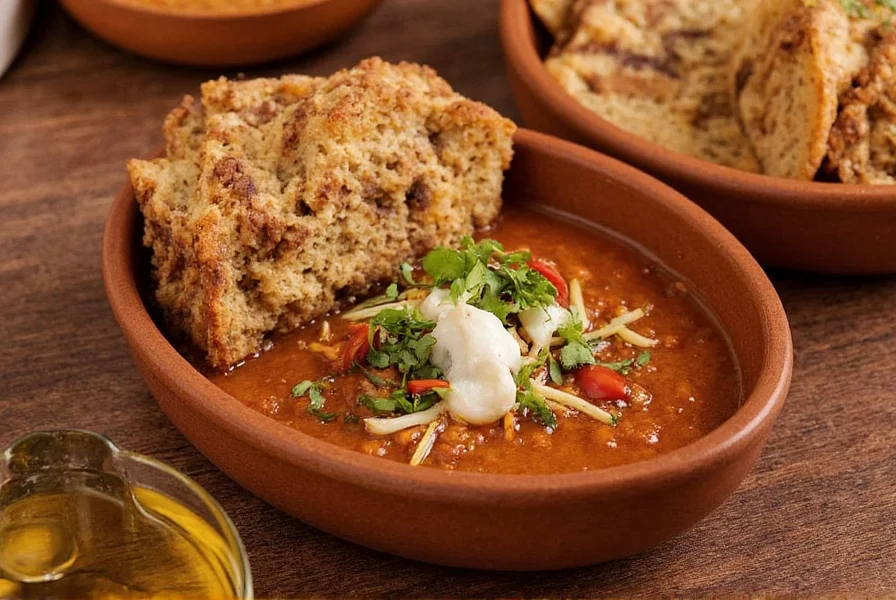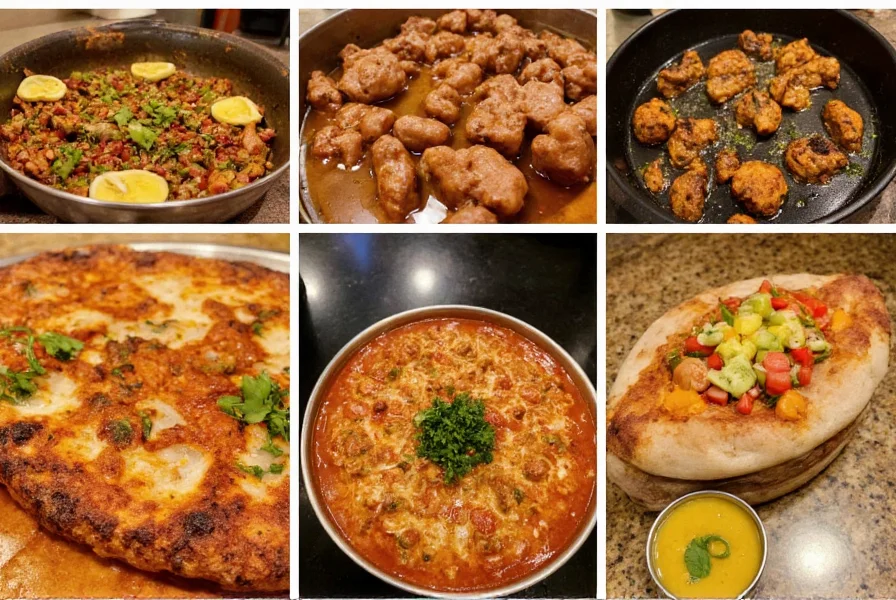When seeking an authentic Indian dining experience, understanding the rich diversity of India's culinary landscape is essential. Indian cuisine isn't monolithic but represents dozens of regional cooking traditions that vary dramatically across the country's geography. From the creamy curries of Punjab to the coconut-based dishes of Kerala, each region offers distinctive flavors, ingredients, and cooking methods that define what makes a truly exceptional Indian restaurant.
Regional Cuisine Differences You Should Recognize
One of the most telling signs of an authentic Indian restaurant is its understanding and representation of regional specialties. Many establishments mistakenly offer a generic 'Indian' menu when India's culinary traditions are incredibly diverse. A quality Indian restaurant will typically specialize in or at least clearly differentiate between regional cuisines.
| Region | Signature Dishes | Key Ingredients | Cooking Style |
|---|---|---|---|
| North India | Butter chicken, naan, tandoori dishes | Dairy, wheat, nuts | Tandoor oven, rich gravies |
| South India | Dosa, idli, sambar | Rice, lentils, coconut | Steamed, fermented batters |
| East India | Rasgulla, macher jhol | Fish, mustard oil, rice | Lightly spiced, subtle flavors |
| West India | Vada pav, dhokla, seafood curries | Coconut, seafood, millet | Bright, tangy flavors |
Identifying Quality in Indian Restaurants
Several indicators distinguish exceptional Indian dining establishments from generic curry houses. First, examine the menu for regional specificity—restaurants specializing in particular regional cuisines typically demonstrate greater authenticity than those offering a 'greatest hits' compilation of Indian dishes. Look for menu descriptions that explain the origin of dishes rather than simply listing ingredients.
Observe the spice cabinet visible in the dining area or ask about their spice preparation. Authentic Indian restaurants often grind spices fresh daily rather than using pre-mixed curry powders. The aroma when entering should be complex and layered, not dominated by a single overpowering scent. Staff knowledge represents another crucial factor—servers should understand the cultural context of dishes, regional variations, and can make thoughtful recommendations based on your preferences.

What to Expect During Your Dining Experience
Understanding the structure of an Indian meal enhances your restaurant experience. Traditional Indian dining often follows a progression from lighter to heavier dishes, beginning with appetizers like samosas or pakoras, followed by breads and rice, then main curry dishes, and concluding with desserts like gulab jamun or kheer. Many quality establishments serve courses sequentially rather than bringing everything simultaneously.
Don't be surprised if the restaurant offers complimentary items like papadum (thin lentil crackers) or small servings of raita (yogurt condiment) to cleanse your palate between dishes. In authentic settings, staff may check in periodically to ensure you're enjoying your meal and offer additional servings of bread or rice as needed. The pacing should feel relaxed and unhurried, reflecting India's dining culture where meals are social events rather than rushed transactions.
Common Misconceptions About Indian Restaurants
Several widespread misconceptions affect how diners approach Indian cuisine. Many believe all Indian food is extremely spicy, when in reality heat levels vary significantly by region and dish. Quality restaurants will adjust spice levels to your preference rather than serving uniformly fiery food. Another misconception suggests Indian cuisine is primarily meat-based, while many regions feature predominantly vegetarian traditions influenced by religious practices.
The notion that butter chicken represents 'traditional' Indian food deserves clarification—it's actually a relatively modern dish created in Delhi during the mid-20th century. Similarly, the ubiquitous 'naan' bread originated in Mughlai cuisine and isn't traditional to all Indian regions. Understanding these nuances helps set appropriate expectations when visiting an Indian restaurant.

Cultural Considerations for Dining
While most Indian restaurants in Western countries adapt to local dining customs, understanding traditional practices enhances your experience. In India, many establishments operate on a thali system where multiple small dishes arrive simultaneously on a single platter. Some traditional restaurants still serve food on banana leaves, particularly in South India.
Eating with your right hand remains customary in many parts of India, though restaurants catering to international customers typically provide utensils. If dining in a more traditional setting, remember that the left hand is considered unclean in many Indian cultures, so avoid using it for passing items or eating. Most quality Indian restaurants today balance tradition with customer comfort, but recognizing these cultural elements shows respect for the cuisine's origins.
Finding the Right Indian Restaurant for Your Preferences
Your ideal Indian dining experience depends on personal preferences and occasion. For family dinners, look for restaurants with diverse menus accommodating various spice preferences and dietary requirements. Those seeking authentic regional specialties should research restaurants specializing in particular Indian cuisines rather than general 'Indian' establishments. Business dinners might benefit from more formal settings with private dining options, while casual meals could explore street food-inspired concepts.
Consider visiting during off-peak hours for a more relaxed experience where staff can provide greater attention to your questions about the menu. Many quality Indian restaurants offer tasting menus that showcase regional specialties, providing an excellent introduction to the diversity of Indian cuisine. Don't hesitate to ask about daily specials, as these often feature seasonal ingredients or traditional dishes not listed on the regular menu.
What are the key differences between North Indian and South Indian cuisine?
North Indian cuisine typically features wheat-based breads like naan and roti, dairy-rich gravies, and tandoor-cooked meats. South Indian cuisine emphasizes rice, lentils, coconut, and seafood with lighter, tangier flavors. North Indian dishes often use ghee and cream, while South Indian cooking favors coconut oil and tamarind. The spice profiles differ significantly, with South Indian food incorporating more mustard seeds and curry leaves.
How can I tell if an Indian restaurant uses fresh spices?
Authentic Indian restaurants typically grind spices fresh daily rather than using pre-mixed curry powders. You can often see whole spices in glass jars behind the counter or ask if they prepare their own spice blends. The aroma should be complex and layered, not dominated by a single scent. Staff should be able to explain their spice preparation methods, and dishes shouldn't have the uniform color that often indicates commercial curry powder use.
Is all Indian food extremely spicy?
No, this is a common misconception. While some Indian dishes are spicy, heat levels vary significantly by region and dish. Many traditional Indian recipes focus on complex flavor profiles rather than heat. Quality restaurants will adjust spice levels to your preference. Southern Indian cuisine often features more chili heat, while Northern and Eastern regions emphasize aromatic spices with less emphasis on heat. Many classic dishes like butter chicken or korma are mild by design.
What should I expect regarding vegetarian options at authentic Indian restaurants?
Authentic Indian restaurants typically offer extensive vegetarian options, reflecting India's strong vegetarian traditions. Many regions have centuries-old vegetarian culinary practices, with some restaurants specializing exclusively in vegetarian cuisine. Look for dishes labeled 'shakahar' (vegetarian) which avoid onion and garlic in certain religious traditions. Quality establishments will have multiple paneer (Indian cheese), lentil, and vegetable dishes representing different regional styles, not just token vegetarian options.











 浙公网安备
33010002000092号
浙公网安备
33010002000092号 浙B2-20120091-4
浙B2-20120091-4